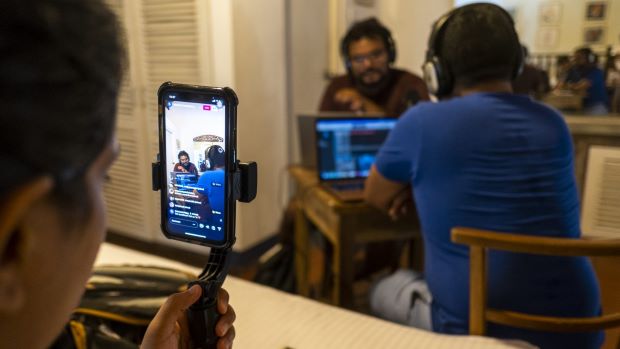The fact-checkers decoding Sri Lanka’s meltdown
From protests to power cuts, Watchdog uses open source research to investigate Sri Lanka’s ongoing political and economic crisis
By Nilesh Christopher
On the evening of May 3, the atmosphere at Galle Face Green, an esplanade along the coastline of Sri Lanka’s capital city of Colombo, was carnivalesque. Parents strolled on sidewalks with toddlers hoisted on their shoulders. Teenagers wearing bandanas played the flute and blew plastic horns. People climbed atop makeshift podiums to address the crowds, greeted by scattered applause.
The crowd of a few hundred was part of a series of protests that had been underway since mid-March, demanding the ouster of President Gotabaya Rajapaksa. For months, the country has been trapped in a brutal economic crisis: Sri Lanka is currently unable to pay for imports of essentials, such as food, medicines, and fuel. Populist tax cuts, an abrupt ban on fertilizer imports, decimated crop yields, and the collapse of tourism during the pandemic all helped to push the country into the worst economic crisis it has faced since gaining independence in 1948.
The island nation owes nearly $7 billion this year and has next to no foreign reserves left. “We don’t have any gas. We don’t have fuel and some food items. We lose power for three to four hours daily now,” said Nalin Chamara, 42, a hotelier protesting with his family and children. Meanwhile, the presidential family at one point controlled around 70% of the nation’s budget and ran it as a family business, spending billions of dollars of borrowed money on vanity projects, such as an extravagant airport and cricket stadium that now sit almost entirely unused.
Yudhanjaya Wijeratne walked among the Galle Face Green crowds, surveying the scene. He pointed out where demonstrators had jury-rigged their own electricity supply by welding solar panels atop an open truck and connecting them to a battery. The power generated was being used to charge over two dozen smartphones inside a big blue tent, which also contained a library housing 15,000 books. “This is what Sri Lankans will do if you let them build stuff. F(*&ing build infrastructure from scratch,” Wijeratne said. The protest featured a giant middle finger monument made of plastic bottles, directed at the Rajapaksas. “Our real educational export should be B.Sc. in protest,” Wijeratne said.
Wijeratne, 29 years old, is best known as the author of Numbercaste, a science fiction novel about a near-future world where people’s importance in society is decided based on the all-powerful Number, a credit score determined by their social circle and social network data. But he is also the chief executive of Watchdog, a research collective based in Colombo that uses fact-checking and open source intelligence (OSINT) methods to investigate Sri Lanka’s ongoing crisis. As part of its work, he and his 12-member team of coders, journalists, economists, and students track, time stamp, geolocate, and document videos of protests shared online.
Watchdog’s protest tracker has emerged as the most comprehensive online archive of the historic events unfolding in Sri Lanka. Its data set, which comprises 597 different protests and 49 conflicts, has been used by global news organizations to demonstrate the extent of public pushback.
“[Our] core mission is simple,” Wijeratne told Rest of World. “We want to help people understand the infrastructure they use. The concrete, the laws, the policies, and the social contracts that they live under. We want to help people understand the causality of how they came to be and how they operate.”
In May, Rest of World visited Watchdog to see how the group, operating under the shadow of a regime notorious for distorting the truth, aims to uncover the reality of Sri Lanka’s economic and political crisis. Despite threats from authorities, Watchdog is hunting hoaxes, investigating matters of public welfare, and building software to combat the latest in a string of crises Sri Lankans have had to contend with. But while the group works to make sense of the crisis, it also has to contend with the effects itself, battling energy shortages, payment blocks, and financing challenges, to keep the lights on. With the country’s economy unlikely to recover soon, the Watchdog team is tackling its most important project — and its biggest threat.
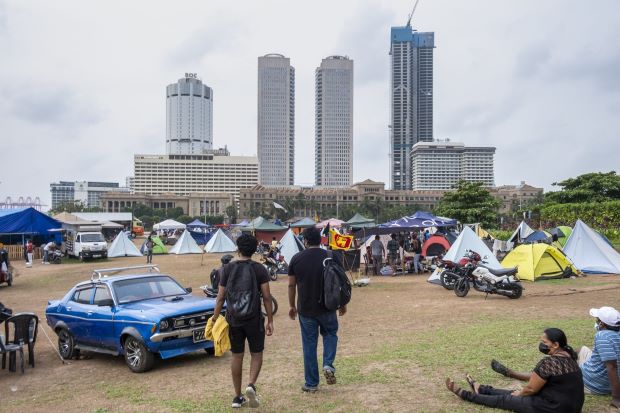
On April 21, 2019, eight suicide bombers, later identified as Islamist terrorists, attacked three churches and three luxury hotels in the heart of Colombo, killing almost 270 people. Citizens were gripped with panic, and, yet, the government offered little information, or reassurance. “When the bombs went off, the government had a six-hour gap — just radio silence,” Wijeratne recalled.
Rumours of Sri Lankan troops searching for bombs on Galle Road and truck bombs circulating on highways spread on social media. A stray tweet from a government minister claimed that intelligence officials had warned about the bombings in advance. The Sri Lankan government’s response to the tide of misinformation was to block social network and messaging apps, including Facebook and WhatsApp.
A local startup mogul named Bhanuka Harischandra witnessed two of the attacks personally. Sitting in his car outside one of the targeted hotels, he uploaded Instagram Stories of shattered windows, assuming that a generator had blown up. “Only when I was re-watching the video … did I actually see a severed limb on that video,” Harischandra recalled. By sheer coincidence, he made his way to another hotel, where the second explosion happened just as he walked in. “I kind of felt like I cheated death twice that day,” he said.
Amid the confusion of the day, it was difficult to get any clear sense of what was happening. Harischandra’s mother, who was working as a surgeon at The National Hospital of Sri Lanka, received WhatsApp rumours that the hospital was also a target. Surgeons working in the operating theatres panicked. “This is really stupid,” Harischandra thought. “There has to be a better way for us to process this information.”
Sensing a general appetite for verified information, Harischandra began assembling a ragtag fact-checking team. One of the first people he called was Wijeratne, whom he knew through playing video games. With a background in data science, Wijeratne had experience researching misinformation and conducting content moderation in non-English languages. “I understand how he thinks, and I knew he’d fit well with the ethos of what we needed to do,” Harischandra said of Wijeratne.
The group that would go on to become Watchdog first met two days after the bombings, at Coco Veranda, a boutique coffee shop in central Colombo. The team included Nisal Periyapperuma, a university dropout and self-taught coder, and Ragulan Ketheeswaran, a public relations consultant. Another co-founder, Safra Anver, also joined and has since left.
The team built a fact-checking app within 36 hours. Periyapperuma, the lead coder, designed the app to be fast and to run on as few resources as possible, simply pulling information from a Google Sheet on the back end.
When users checked the app, they could see a list of stories in two columns: verified and fake news. The team joined 800 WhatsApp and 11,000 Facebook groups to pull in recent rumours. When they spotted a story that was gaining traction, they set out to analyze its veracity. They also opened a WhatsApp Business account and invited people to send videos and messages that sounded suspicious or inaccurate. Soon, they were flooded with tips.
To fact-check rumours, Wijeratne, who had previously made a name for himself as a blogger, tapped into his contacts in the local blogging and journalism community, creating a ‘whitelist’ of trustworthy reporters and news organizations to call and debunk rumours.
One of the first stories the team checked was a widely circulating rumour that Muslims had poisoned the water supply in the Colombo neighbourhood of Hunupitiya. The rumour spread the day after the attack, and, at the time, said Wijeratne, Islamophobia was rampant, with mobs attacking Muslim-owned businesses, Buddhist nationalist monks calling for Muslims to be stoned, and the state arbitrarily arresting hundreds of people for reasons as trivial as carrying a Quran.
“There were vans going up and down on the street, saying the Muslims have poisoned the water supply,” Wijeratne said. He called journalists on the ground to debunk the poisoned water claim. Google reviews of the Watchdog app from the time praised the group’s work. One called the team “national heroes”, explaining that the app “not only allows me to see legit news, but also verify if the fake stuff is fake.”
As the volume of misinformation exploded, Watchdog scaled its operations. Ketheeswaran, who was doing outreach, raised an army of volunteers to translate on-demand into Sinhala and Tamil. In the first month of operation, Watchdog published nearly 400 fact checks, debunking a steady stream of heavily charged myths: ISIS announcing a huge blast in 24 hours, burqa-clad women attempting to bomb churches, and Muslim doctors sterilizing Sinhalese women. Over 10,000 users had turned to the Watchdog app seeking verified information by the end of week one.
Within 90 days, Watchdog had scaled to between 25 and 30 volunteers, with almost 52,000 people using the website and mobile app. “If this was a Silicon Valley company, we’d be floating in Sequoia Capital dough,” Wijeratne said.
But by September, the volunteer force started petering out. Burnouts were common. Watchdog continued its fact checking through a highly incendiary election season, which made it a target of threats. “We had people threatening to set offices on fire. To which we say: What office? If you can find it, go ahead,” Wijeratne said. “We operate completely decentralized.”
It went on to tackle the COVID-19 infodemic in early 2020 but soon faded. Wijeratne said that he and Periyapperuma, the only two left by then, had grown “disillusioned” with the impact of their fact checking. They had come to believe that just pressing the “bullshit button”, as Wijeratne called it, wasn’t enough. They took a sabbatical in April 2020, to rethink the way Watchdog worked. Periyapperuma went back to work at a couple of other tech firms he had cofounded, and Wijeratne published his second novel, The Salvage Crew, which he wrote with the help of artificial intelligence, and dove into other writing projects.
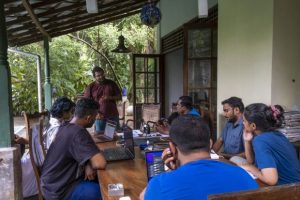
In January 2022, just as the first effects of the economic crisis were beginning to be felt, Watchdog relaunched as an OSINT collective aimed at offering high-quality analysis of Sri Lanka’s infrastructure. OSINT uses open-source data, such as public datasets, social media posts, and satellite imagery, to conduct investigations. Perhaps the most famous OSINT collective is Netherlands-based Bellingcat, which has used such techniques to investigate conflicts in Syria, Mexico, Iraq, and Ukraine. Wijeratne described Watchdog deferentially as “a junkyard version of Bellingcat.”
“Bellingcat is interested in Ukrainian weapons, we are more interested in the public infrastructure and the interest of the country,” he said.
Watchdog raised $340,000 from the Organized Crime and Corruption Reporting Project (OCCRP), which let it hire full-time staffers to address specific information gaps in the Sri Lankan news ecosystem. Having tackled the bombings, an election, and COVID-19, they were soon faced with their next critical assignment: catastrophic economic meltdown.
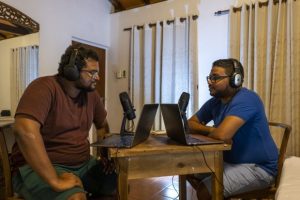
One day in March, Wijeratne and broadcast journalist Nadim Majeed sat in a Colombo apartment, waiting for the power to come back on. They were supposed to be recording the pilot episode of their new podcast, The Doghouse, which aimed to shed light on some of the causes of the country’s pressing economic crisis. But the crisis has led to fuel shortages and frequent power cuts, sometimes for up to 13 hours a day, and while Wijeratne and Majeed had been careful to charge their laptops and microphones, they couldn’t do anything about the air conditioning. With temperatures hitting 30 degrees Celsius, they sweated for a while before deciding to start anyway: “Welcome to the hottest, sweatiest, swelteriest podcast in the history of podcasts that you will find only in Sri Lanka,” Majeed introduced the show.
In January, team Watchdog noticed that many Sri Lankans started taking to social media to complain about unscheduled 10-hour long power cuts. But the Sri Lankan government denied those claims, insisting that these were one-off incidents and publicly assuring an uninterrupted power supply. “They kept saying there will be no power cuts. [But] power cuts kept happening,” said Majeed.
As the gulf between the government line and lived experience grew, Watchdog ran a survey, asking citizens about the location and duration of power cuts. Then, Watchdog members cross-referenced responses with publicly available documents about power supply and budgets from government-owned utilities. As a result, Watchdog was able to reveal that the real reason for the blackouts was debt-laden state utilities, which had failed to forecast demand and were now strapped for cash to buy the necessary fuel to keep the lights on. It “verified that the political propaganda was just that — propaganda,” Wijeratne wrote in a long-form investigation that Watchdog published in English, Tamil, and Sinhala.
For the team, this type of data-driven long-form investigation represented a new, urgent mission to investigate government failures. It gave them a renewed sense of purpose. By using public documents and crowdsourced data, supported by shoe-leather reporting, they hoped to arm citizens with information that could effect real change.
One afternoon in May, the Watchdog team met at Fern Cove Villa, a guesthouse in suburban Colombo with a central garden courtyard, green pillars, and an old tiled roof. It was breezy and spacious. The cries of myna birds filled the silence.
The then 12-strong team consisted of an economist, several journalists, and a couple of software engineers. They worked remotely, or wherever there was a reliable source of electricity, using a crowdsourced list of places with generators to work from during power cuts.
Wijeratne, dressed in green shorts and a brown T-shirt, stood near the head of the table and began by congratulating the team on a milestone: Watchdog had reached over 1 million people in April across its app, website, and social media.
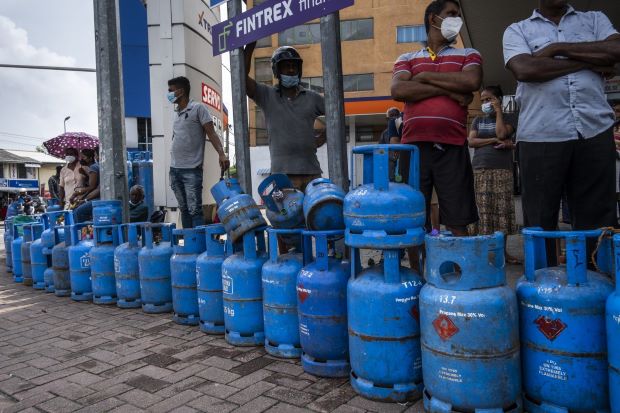
At 29, Wijeratne is tall with ruffled hair and a scruffy beard. He was born poor: taught himself coding and writing using a Pentium 2 desktop PC that he said was scavenged from a dump near a second-hand computer store in a Colombo suburb that discarded unused parts. He has a tattoo combining elements including a tree and a Darth Vader helmet on his right bicep; he loves to argue, swears like a sailor, and quotes satirist writers Terry Pratchett and George Bernard Shaw off the top of his head. When he’s not talking, he’s smoking. “In the grand vision of trying to be a good point of information for people, we’ve actually done far better than what we expected to be in April,” Wijeratne told the team.
At least part of Watchdog’s recent success is the result of Protest Tracker — an attempt to identify and verify protest sites, using public and crowdsourced data, in order to map the scale of the citizen unrest in Sri Lanka.
Ishan Marikar, Watchdog’s newest member, was one of the project’s earliest contributors. A self-taught coder who was working as a software developer, he began contributing after spotting a Watchdog form soliciting links to map the protests. Unrest had been building for weeks, and videos had emerged of demonstrations against the state, a sight not seen in decades in a country notorious for quashing dissent. “[Watchdog] captivated me because I love the idea of exploration, trying to look at data and trying to figure things out,” Marikar said, the sun beating down on his face at the garden in Fern Cove Villa.
One of the first videos Marikar geolocated was a protest on April 2. The footage, low-resolution video shot on mobile, was shared on Twitter with a caption claiming that there was a protest ongoing at Kanuwana Junction in Ja-Ela, in the northern suburb of Colombo. The caption helped Marikar narrow down the target location.
“We always have to verify that it’s taken in the place that it [is said to be],” Marikar said. So he parsed the footage closely. His first clue was the presence of a gas station, a Lanka IOC, and a small shed next to it, on the right side of the road. He located it using Street View on Google Maps, partially thanks to his familiarity with the Sinhala language and the Sri Lankan landscape. Marikar then captured the latitudinal and longitudinal coordinates of the protest site (7.0848, 79.8932) and added them to a spreadsheet, with footnotes on what he observed at the protest site: “Things have been set on fire in the middle of the road.”
Within its first week, Watchdog’s protest tracker had geolocated and verified footage from 116 sites in Sri Lanka, with estimates on the size of the gatherings and notes on the nature of the protests. The team also began archiving protest footage, as many Facebook Live videos were taken down. As the state moved to crack down on the protests, the team expanded its logs to collate and verify footage of police brutality, sites of violent conflicts, and pro-government demonstrations.
Watchdog’s data has helped challenge the government’s narrative that the masses are still supportive of the Rajapaksa family. On April 27, when the prime minister dismissed the unrest as reflective of a minority opinion, a mainstream English language newspaper used Watchdog’s public data to counter his claims. Most of the protests were located in areas that had been Rajapaksa strongholds. Watchdog’s data was also used by international news wire Reuters to map the protests across Sri Lanka. “You can refute claims based on this data,” said Marikar.
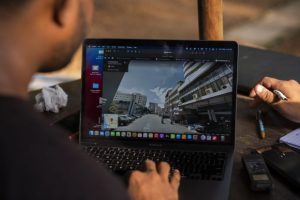
On May 5, a dozen people representing various civil society groups and medical unions from across Sri Lanka gathered around a rectangular table in a well-lit office to meet with Dr. Vinya Ariyaratne, the general secretary of Sri Lankan humanitarian development organization Sarvodaya. The representatives took turns detailing the problems their communities faced, including that the elderly were unable to afford drugs. Universities reported increased dropout rates, as students left to support their families. Migrant workers didn’t have the means to return to Colombo, owing to the high cost of rent and food. “We are heading for a disaster, unless something happens within the next few days,” Ariyaratne told Rest of World in his office, shortly after the meeting.
As the president-elect of the Sri Lanka Medical Association (SLMA), Ariyaratne had been alerted to medical supplies running out at hospitals in early March. “It started with the surgical and anaesthetic drugs, and they said that these drugs are in short supply,” Ariyaratne said. Public murmurs of the shortage emerged after doctors took to WhatsApp, Facebook, Instagram, and Twitter to raise requests for drugs. Despite the Sri Lanka Medical Association warning about hospitals soon being unable to provide emergency care, the Department of Government Information denied any shortages. On April 10, Watchdog’s Periyapperuma decided to crowdsource the data. He created a Google Form for medical professionals to fill in and received over 50 responses in two days, with names of medicines in short supply.
A broader picture of the shortages emerged when Wijeratne started scrubbing through the incoming requests: Medical staff at small hospitals raised short-term needs, such as a couple of injections or a dozen vitamin B tablets. Then, bulk requests came in from official government bodies wanting to procure 17.5 million tablets of sodium valproate, used to treat epilepsy and bipolar disorder, or 2.5 million potassium chloride tablets, used to treat potassium deficiency and in heart surgeries. Insulin was running out, as were neonatal tubes that help babies breathe.
As Wijeratne cleaned up the data, Periyapperuma built Elixir, a central, public database of crowdsourced medical needs. The dashboard acts as a demand-prediction system for medicines in short supply and matches each request with the regulator-approved supplier list for procurement. Once a request is published, hospitals wait for donors or aid organizations to help address the shortages.
Ariyaratne said Sarvodaya plans on integrating Elixir to operate in all 25 districts of Sri Lanka until the government is able to procure drugs again.
After Rest of World left Sri Lanka on May 7, the conflict between protestors and the government intensified. The authorities tear-gassed protest sites to disperse the crowds. On May 9, the iconic Galle Face Green site was attacked by pro-government demonstrators, and multiple tents, including the library, were damaged.
Watchdog sprang into action, parsing through dozens of videos online to unmask the identities of attackers and re-create a timeline of the attack. Anti-government protesters burned down the residences of former Minister Johnston Fernando and Sananth Nishantha, and the government declared a state of emergency as Prime Minister Mahinda Rajapaksa, the president’s brother, resigned amid the mass protests.
On May 22, Sri Lanka received a temporary breather when Indian ships carrying medical supplies on credit arrived on Sri Lankan shores. Yet other state functions are still struggling. As gas stations run out of fuel, Telegram groups have sprung up to offer updates on stations that aren’t empty at any given time.
People are turning to Watchdog to organize information on fuel pumps. Watchdog has also received requests to create QR codes to track the shipment of medicines during delivery. “I don’t want to do it,” Wijeratne said. “We are taking on functions of the nation state because these mother(*&ers are so incompetent.” The Watchdog team has now open sourced Elixir for anyone to build on top.
Food shortages continue, fuel queues have grown longer, the government still doesn’t have a recovery plan — and the Watchdog team continues to work through power cuts to bring transparency to the maze of Sri Lankan bureaucracy. “There is enough ego that we can actually do something,” Wijeratne said. “We turn that ‘We are f*&)ing pissed off’ energy into either we go make petrol bombs or we go make software and try to make a difference.”
-Nilesh Christopher is a Bengaluru-based reporter at Rest of World where this article was originally featured


